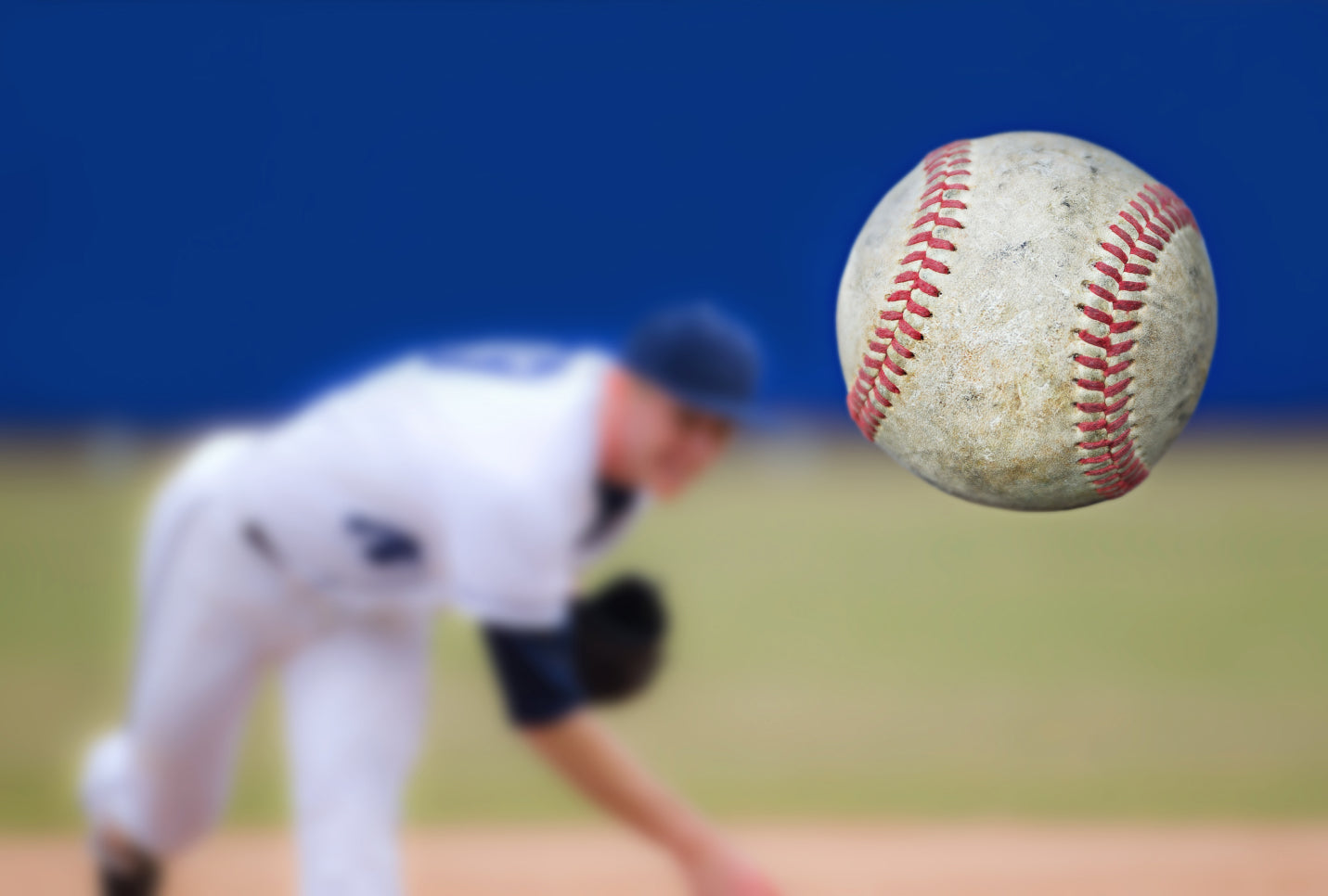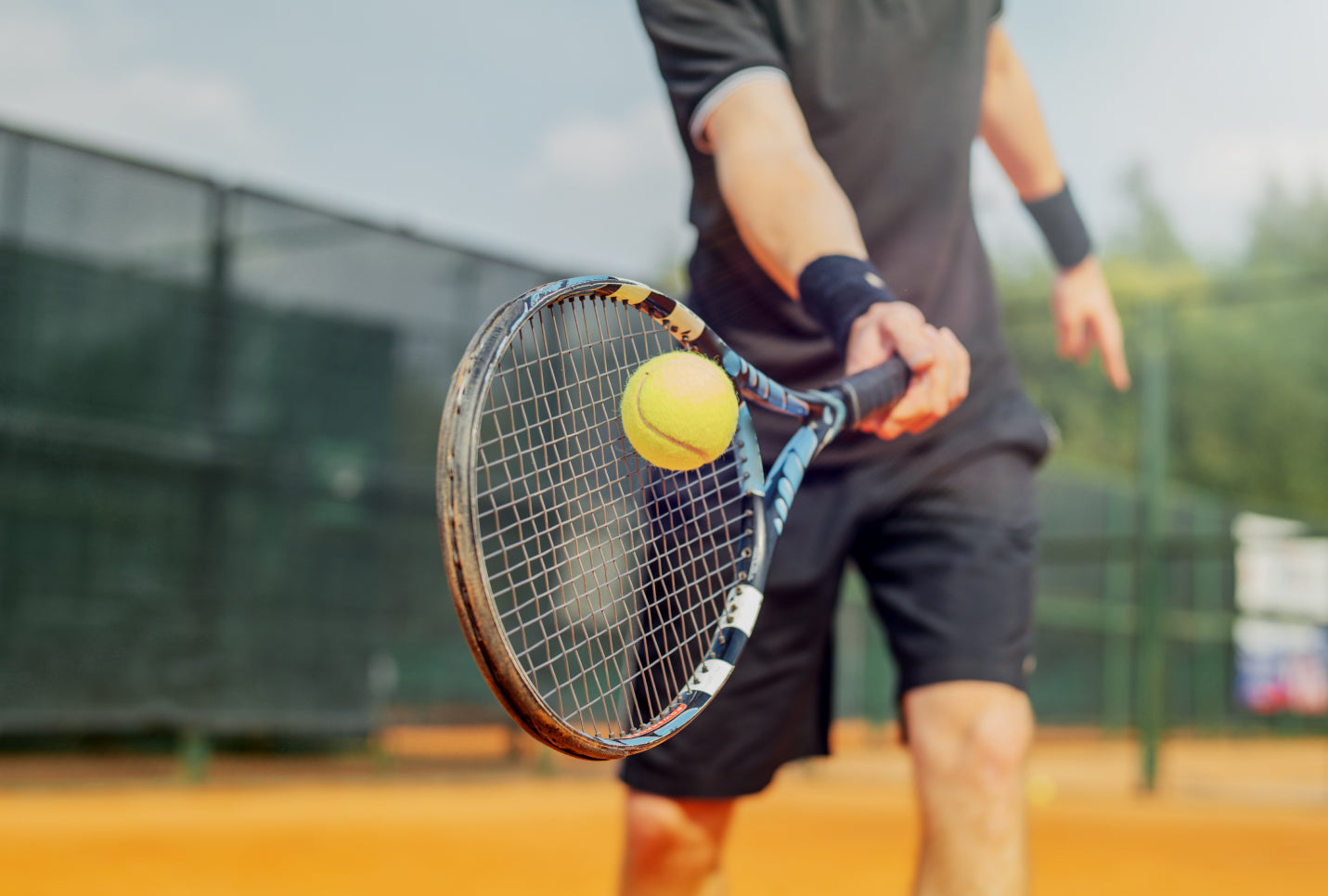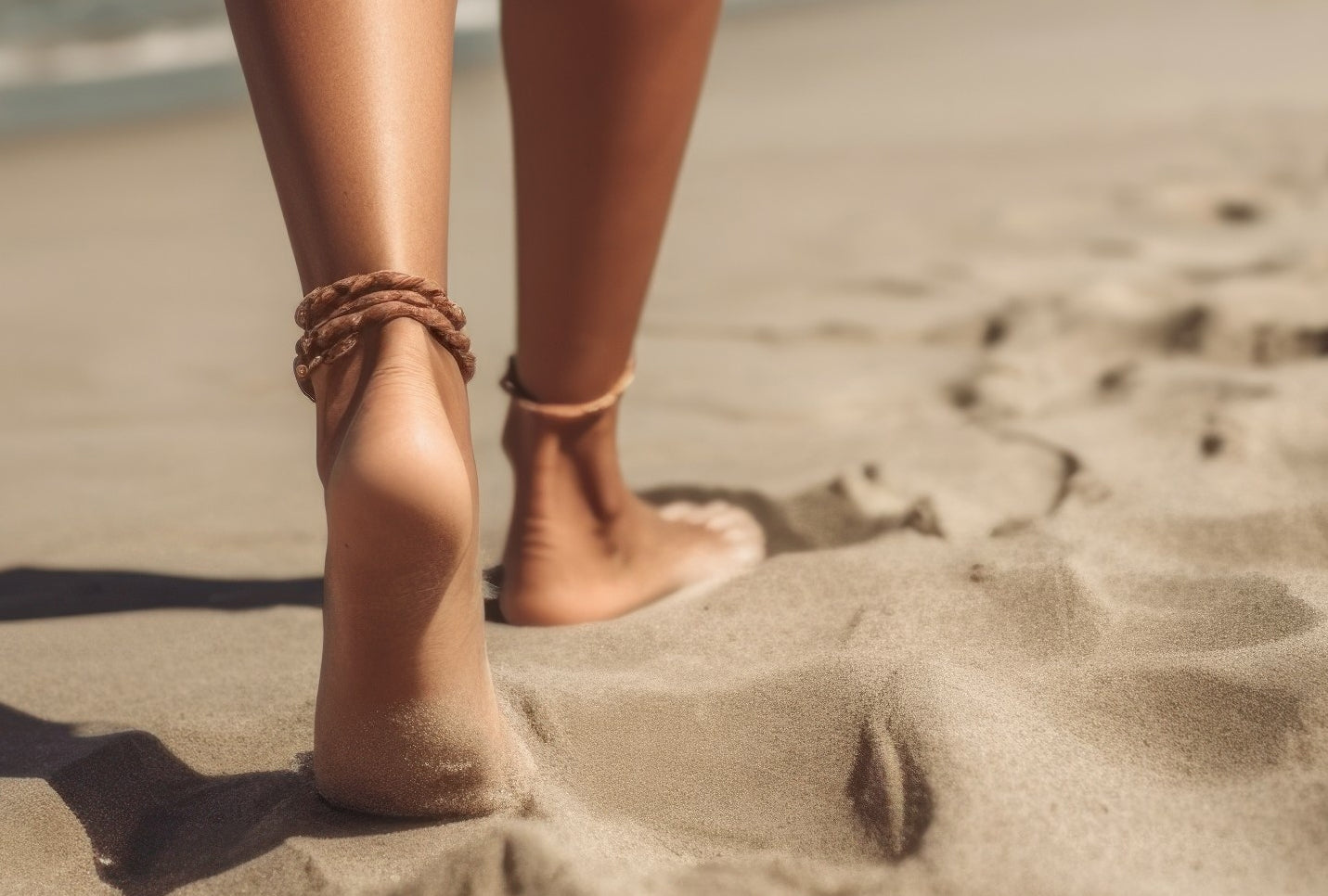Have you ever felt an irresistible urge to kick off your shoes and dig your toes into the sand? You're not alone.
Walking barefoot, particularly on natural surfaces like a sandy beach, has been a part of human history for millennia. This simple act is not only liberating and grounding, but this ideal summer activity is also associated with an array of potential health benefits you might not be aware of.
Is Walking Barefoot Good for You?
Walking barefoot, or "earthing," as it's often called, offers a unique combination of physical and mental benefits underpinned by fascinating biomechanics.
Our feet are complex structures, containing a quarter of the body's bones and a network of muscles, ligaments, and nerves. They're designed for versatile functionality, which often gets overlooked when encasing them in shoes.
Walking barefoot brings the bottom of your feet into direct contact with the ground, allowing them to move and adjust naturally to the terrain. This affects the foot position and plays a significant role in the alignment and functioning of our entire body.
The contrast between hard surfaces, which we often encounter in daily life, and natural surfaces like sand is also essential. Natural surfaces provide a gentle, irregular terrain, promoting a more balanced distribution of pressure throughout the foot.
What Are the Benefits of Walking Barefoot?
Just imagine the warm, sun-kissed sand tickling your toes as you wander barefoot along the shoreline. The simple joy of feeling nature beneath your feet is just one of many perks.
Let's dip our toes into these benefits, shall we?
1. May Support Immune Function
Walking barefoot on the beach allows for direct contact with natural elements. This contact promotes the flow of electrons from the earth into our bodies, leading to antioxidant effects that support our immune system.
Although this topic requires more research, initial studies suggest promising outcomes.
2. Can Soothe Discomfort
Anecdotal evidence and preliminary studies indicate that walking barefoot might help alleviate chronic discomfort and contribute to pain relief, including back and heel discomfort.
This relief may be due to the change in foot biomechanics when we walk barefoot, allowing a more natural foot motion and distribution of body weight.
3. Impact on Cardiovascular Health
It's well-known that regular walking can support cardiovascular health. However, the effort increases when walking barefoot, particularly on the sand, offering even more cardiovascular benefits.
While it's important to consult medical advice before starting any new exercise regimen, incorporating barefoot walking into your routine could support your heart health.
4. Can Support Foot Health
Walking barefoot can promote foot health in various ways. It encourages natural foot positioning, which can help maintain the foot's structure and function.
Barefoot walking may also help soothe plantar fasciitis and the discomfort of flat feet. However, it's crucial to remember that each individual is different, and what works for one might not work for all.
Always consult a healthcare provider before starting new health routines.
5. Supports Emotional Well-being
Walking barefoot isn't just about the physical. Feeling the waves' rhythm and the sand's softness can offer an emotional release like no other.
This intimate connection with nature can help you feel grounded, reducing stress and enhancing your overall well-being. It's believed the direct contact with the earth might stimulate the vagus nerve, a part of our nervous system that helps promote emotional regulation and stress response to support an elevated state of calm and relaxation.
Though everyone's experience varies, many barefoot enthusiasts report feelings of tranquility and joy during their sandy strolls. So, why not give it a try? Your mind might thank you as much as your body.
Barefoot Running and Minimalist Shoes
Barefoot running, like barefoot walking, allows for natural foot movements, possibly improving balance and strength. But running barefoot outside presents its own set of challenges and risks.
This is where minimalist shoes come into play. These footwear options are designed to mimic the feeling of being barefoot while providing a layer of protection against sharp objects and harsh terrain. They aim to encourage the benefits of barefoot locomotion, such as natural gait and improved foot health while reducing potential risks.
As always, transitioning to barefoot running or using minimalist shoes should be done gradually and under professional guidance to prevent injuries like shin splints.
Are There Any Risks to Walking Barefoot?
Before you dive headfirst (or feet-first) into the world of barefoot walking, it's crucial to take a moment to understand the potential undercurrents. While the benefits of walking barefoot are plentiful, they don't completely outweigh the potential risks.
Walking barefoot outside may expose your feet to potential hazards, such as sharp objects that could lead to injuries. Natural environments can also potentially harbor fungal organisms that could lead to infections if precautions aren't taken.
Consider your environment and remain diligent about any potential hazards before deciding to slip your shoes off and throw caution to the seaside wind. If you have certain foot conditions like bunions, hammertoes, or deformities, strolling barefoot along the shoreline might not be the best option without proper medical advice.
Podiatrists often remind us that every pair of feet is like a unique coastline — what works for one might erode another. They emphasize the importance of proper cushioning and support, underscoring that each person's foot care needs are unique.
How To Get Started With Barefoot Walking
If you've spent most of your life in shoes, this transition should be as gentle as the ebb and flow of the tide. Start by spending short amounts of time barefoot on soft, natural surfaces such as grass or sand.
Listen to your body and progress at a comfortable pace. Remember, it's not about winning a race but riding the waves of your well-being.
As you dive deeper into this new practice, paying extra attention to your foot care is also important. Maintaining good foot hygiene is paramount to avoiding issues like fungal infections. After your barefoot sessions, cleaning your feet thoroughly and letting them dry before putting on socks or shoes is advisable.
After a day of barefoot strolling, consider wrapping your feet in the comfort of Incrediwear Circulation Socks. These socks are designed with semiconductor elements to support healthy blood flow and ease feelings of tension, acting as your very own tide of relief.
Surfing the Wave of Wellness
The allure of walking barefoot on the beach extends beyond the simple pleasure it provides; it may also offer a treasure trove of health benefits.
The journey becomes even smoother when you incorporate supportive apparel and gear like our collection at Incrediwear. Remember, foot health isn't an island; it's a vital part of the bigger wellness landscape.
So, kick off your shoes, let the sand be your dance floor, and allow nature to lead you on your wellness journey — one barefoot step at a time.
Sources:
Earthing: Health Implications of Reconnecting the Human Body to the Earth's Surface Electrons | PMC
Can electrons act as antioxidants? A review and commentary | PMC
Grounding – The universal anti-inflammatory remedy | ScienceDirect
Walking your way to better health? Remember the acronym FIT | American Heart Association
Vagal tone and the physiological regulation of emotion | PMC
Read more

Whether you're stepping onto the pitcher's mound in a friendly game of softball or gearing up for competitive baseball, the speed of your pitch plays a significant role in your performance. Faster...

Summer brings the promise of longer, sunnier days, perfect for outdoor activities. It's the ideal season to embrace new hobbies, revitalize our health, and make the most out of the great outdoors. ...






Leave a comment
All comments are moderated before being published.
This site is protected by hCaptcha and the hCaptcha Privacy Policy and Terms of Service apply.